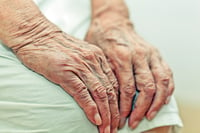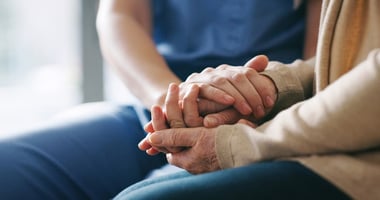Many U.S. adults 65 and older who died of suicide between 2003 and 2016 did not have a known mental...
Oregon’s Death With Dignity Act Impacts Older Women, Men Differently, Study Suggests

Between 1998 and 2018, medical aid in dying (MAID) under Oregon state’s Death With Dignity Act was the most common form (52.7%) of self-initiated death among women over 65, according to an analysis in the American Journal of Geriatric Psychiatry. In contrast, firearm suicides were the most common form (65.7%) of self-initiated death among men in the state, followed by deaths caused by lethal medication under the Death With Dignity Act.
“[O]lder adult women’s likelihood of self-initiated death has grown substantially since [medical aid in dying legalization],” wrote Silvia Sara Canetto, Ph.D., of Colorado State University and John L. McIntosh, Ph.D., of Indian University. “Older adult women’s substantial representation among assisted-suicide/MAID [medical aid in dying] decedents, relative to suicide, may be a clue of their empowerment to determine the time of their death, when hastened-death assistance is permitted; or of their vulnerability to seeking a medicalized self-initiated death, when in need of care.”
The Oregon Death With Dignity Act became law in 1997. Canetto and McIntosh analyzed data from the Public Health Division of the Oregon Health Authority on deaths attributed to the Death With Dignity Act and from the CDC on unassisted suicide by sex and age for the 1998−2018 period.
Some key findings of the analysis included the following:
- There were 492 deaths by lethal medication under the Death With Dignity Act by women aged 65 and older and 578 deaths by men aged 65 and older—or 7.8 per 100,000 for women and 11.5 per 100,000 for men in this age group.
- There were 441 unassisted suicides by women (7.0 per 100,000) and 2,268 by men (45.2 per 100,000).
- For women over 65, deaths caused by lethal medication under the Death With Dignity Act (n=492) exceeded the number of unassisted suicides by all other methods combined (n=441).
- Among women aged 65 to 74 the rates of death by lethal medication (6.1 per 100,000) and suicide (7.4 per 100,000) were not significantly different from each other, but among women aged 75 and older, the rate of death by lethal medication (9.6 per 100,000) was significantly higher than the rate of death by suicide (6.6 per 100,000). In contrast, the rate of death by lethal medication was significantly lower than the rate of suicide among men aged 65 to 74 and among men 75 and older.
Canetto and McIntosh emphasized that men and women may make decisions about medical aid in dying and suicide for different reasons based on societal expectations and culturally ingrained beliefs. They noted, for instance, that women are less likely than men to express a preference for life-sustaining or life-prolonging care. “The reasons for this preference include concerns about being a burden—consistent with women’s socialized tendency to think of themselves as less deserving,” they wrote.
They also cautioned against making interpretations—either for or against medical aid in dying—on the basis of the analysis. “[Medical aid in dying] is a decision everyone makes under conditions of vulnerability; and a choice that ends all choices. At a minimum, significantly more information on the [medical aid in dying] process is needed.”
For related information, see the Psychiatric News article “How Should Organized Medicine Respond to Physician-Assisted Death?”






